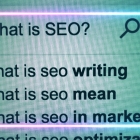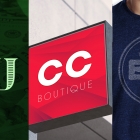What Graphic Designers Want the World to Know
We completely understand. Not everyone knows about graphic design. But that's ok because if they did, there would be no need for us and that would make us super sad. We're quite glad people need us because we like what we do very much. In fact, we like it so much that our designers got together and created a list of things they want the world to know about graphic design.
Display fonts don't belong in body copy
Comic Sans, Papyrus, Blackadder are all examples of display fonts. While they may have their place in as headlines and the like, they do not belong in the main copy. This is because they have a bit too much personality and can distract from or conflict with the message of the text. They're also not easy to read. Save them for occasional use only. We wrote about blog post about this a while back if you care to take a look and learn more about smart typography choices.
No more than two fonts per piece
The thing about fonts is that they have a very big influence on the entire piece. With each new font you introduce, you have to think about how it's going to affect the other fonts on the page. Adding in a new font can totally change the balance and tone of a design, so it's crucial to keep it as uncomplicated as possible.
The color on the screen is not an accurate portrayal of print color
There is a distinct difference between how a color looks on a computer screen and how it looks in print. On screen colors are generally more intense and brighter than printed ones. The colors on a computer screen go by the RGB (red, green, blue) system. Printed inks use either the CMYK (cyan, magenta, yellow, black) system or the PMS (pantone matching system). All three of these systems combine different colors that make different tones. For more detailed information about this, you can read our blog post.
One space after a period. Period.
In the olden days, typewriters needed us to hit the spacebar twice to signal that a new sentence was starting. These days, digital typefaces have precise spacing already built in, so there's no need to hit that space bar twice anymore. It's not wrong to do it exactly, but adding that extra space isn't necessary. You can learn more about the double space debate here.
Images from your website can't necessarily be used on your brochure
Finding images can be difficult and time-consuming and it's tempting to use one that you already have and make it multipurpose, but that doesn't always work out so well. The trouble is that in order for an image to look clear on the web, the image needs to have a resolution of 72 dots per inch (dpi). For print work, it needs to have at least 300 dpi. So without the proper resolutions, that image is going to look wonky and unprofessional. It's worth it to find a new one even if it takes some time and a bit of money. If it's possible to purchase a high resolution image, do it. You'll have more flexibility and be able to use the same image for both print and web.
Simple designs don't take less time and effort
It totally seems like choosing a simple design will take less time to create, but that's not necessarily true. Even the most minimalist design takes a lot of thought and creativity. For example, designers have to decide how the flow and organization of a website will work. Getting the right look and feel takes a lot of thought and planning whether the design is content heavy or clean and simple.
There's a way to pay less and still get great quality
Great web design takes research, sketching, planning and plenty of fine-tuning, but not everyone has the budget to build a website from scratch. If you can't afford to do that, there are templates out there that are really great and can be customized to some degree. Just be careful not to be tempted by something fast and cheap. Instead, make sure that if you have a limited budget, you're still getting good quality. Help from designers and developers make it totally possible to get a website that looks polished and professional without spending a billion dollars.
Being a good graphic designer takes a lot of training and effort. Designers pay close attention to detail, stay abreast of current trends and technologies, and work hard to make sure you end up with a piece that you like and that represents you well. The next time you see a graphic designer, give him or her a hug. They stay on top of all these little details so that you don't have to.

 An agency-eye view of Marketing, Advertising, Branding, Design & Media.
An agency-eye view of Marketing, Advertising, Branding, Design & Media.




